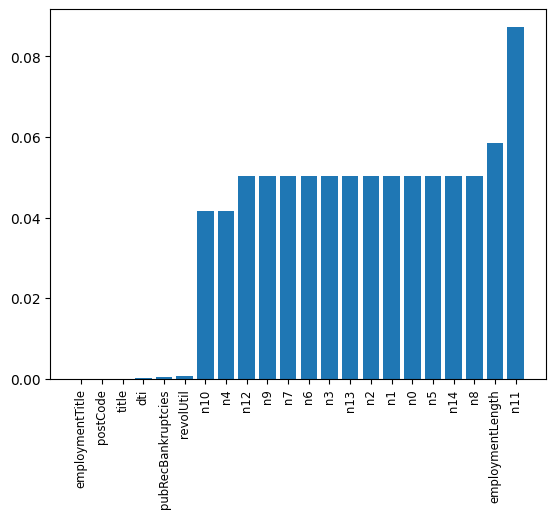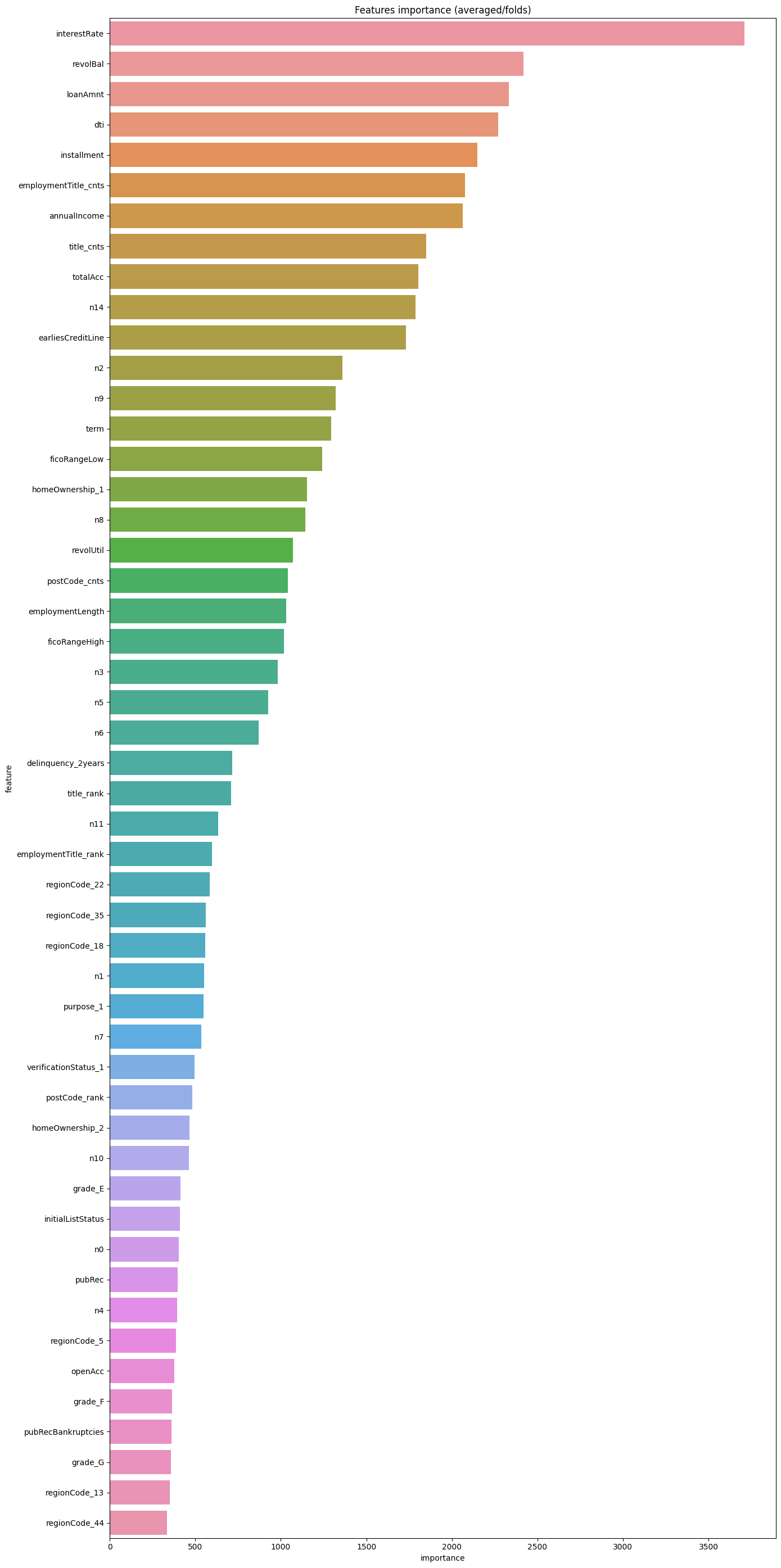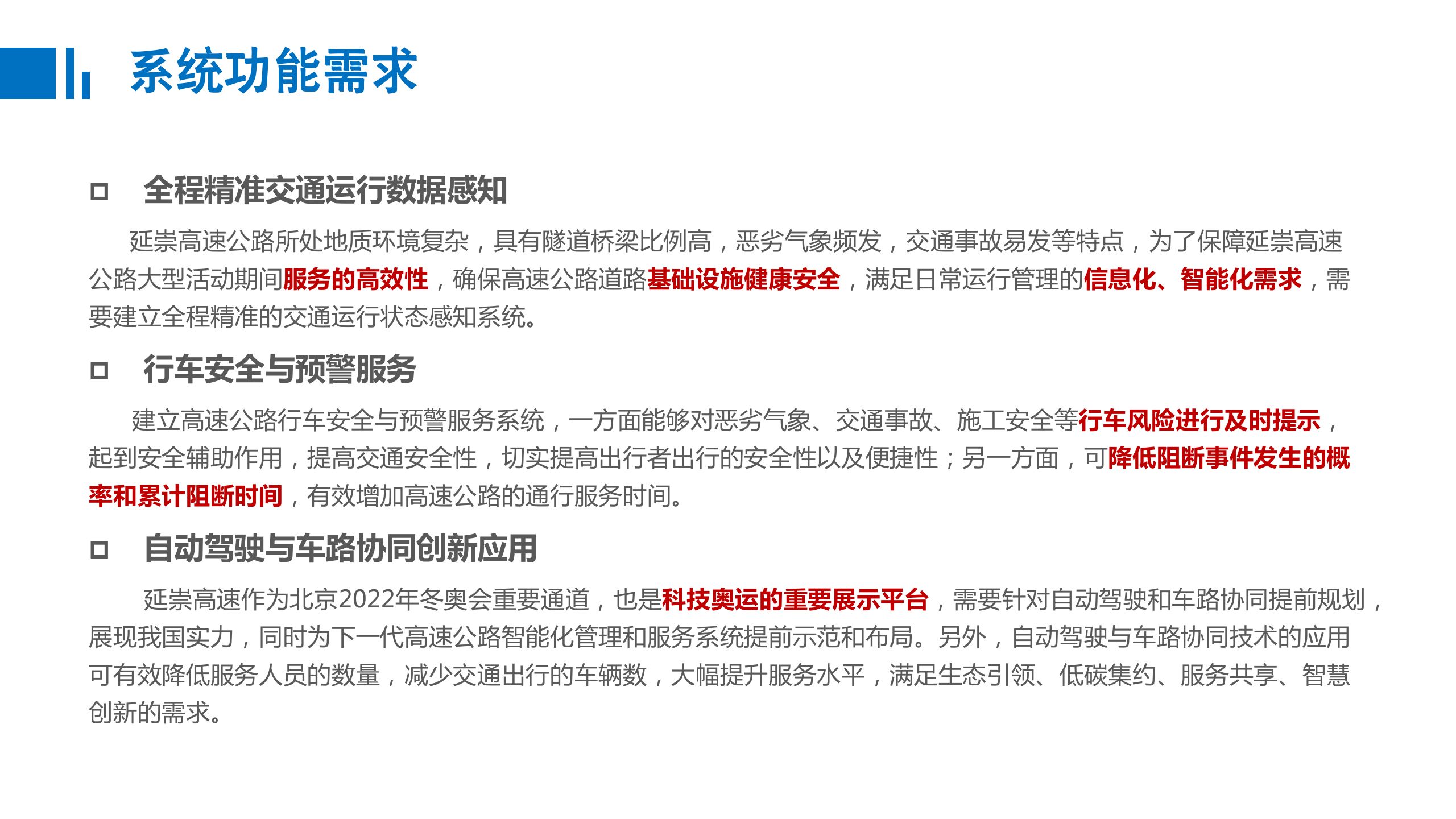零基础入门金融风控之贷款违约预测挑战赛
赛题理解
赛题以金融风控中的个人信贷为背景,要求选手根据贷款申请人的数据信息预测其是否有违约的可能,以此判断是否通过此项贷款,这是一个典型的分类问题。通过这道赛题来引导大家了解金融风控中的一些业务背景,解决实际问题,帮助竞赛新人进行自我练习、自我提高。
项目地址:https://github.com/datawhalechina/team-learning-data-mining/tree/master/FinancialRiskControl
比赛地址:https://tianchi.aliyun.com/competition/entrance/531830/introduction
数据形式
对于训练集数据来说,其中有特征如下:
- id 为贷款清单分配的唯一信用证标识
- loanAmnt 贷款金额
- term 贷款期限(year)
- interestRate 贷款利率
- installment 分期付款金额
- grade 贷款等级
- subGrade 贷款等级之子级
- employmentTitle 就业职称
- employmentLength 就业年限(年)
- homeOwnership 借款人在登记时提供的房屋所有权状况
- annualIncome 年收入
- verificationStatus 验证状态
- issueDate 贷款发放的月份
- purpose 借款人在贷款申请时的贷款用途类别
- postCode 借款人在贷款申请中提供的邮政编码的前3位数字
- regionCode 地区编码
- dti 债务收入比
- delinquency_2years 借款人过去2年信用档案中逾期30天以上的违约事件数
- ficoRangeLow 借款人在贷款发放时的fico所属的下限范围
- ficoRangeHigh 借款人在贷款发放时的fico所属的上限范围
- openAcc 借款人信用档案中未结信用额度的数量
- pubRec 贬损公共记录的数量
- pubRecBankruptcies 公开记录清除的数量
- revolBal 信贷周转余额合计
- revolUtil 循环额度利用率,或借款人使用的相对于所有可用循环信贷的信贷金额
- totalAcc 借款人信用档案中当前的信用额度总数
- initialListStatus 贷款的初始列表状态
- applicationType 表明贷款是个人申请还是与两个共同借款人的联合申请
- earliesCreditLine 借款人最早报告的信用额度开立的月份
- title 借款人提供的贷款名称
- policyCode 公开可用的策略_代码=1新产品不公开可用的策略_代码=2
- n系列匿名特征 匿名特征n0-n14,为一些贷款人行为计数特征的处理
还有一列为目标列isDefault代表是否违约。
预测指标
赛题要求采用AUC作为评价指标。
具体算法
导入相关库
import pandas as pd
import numpy as np
from sklearn import metrics
import matplotlib.pyplot as plt
from sklearn.metrics import roc_auc_score, roc_curve, mean_squared_error,mean_absolute_error, f1_score
import lightgbm as lgb
import xgboost as xgb
from sklearn.ensemble import RandomForestRegressor as rfr
from sklearn.linear_model import LinearRegression as lr
from sklearn.model_selection import KFold, StratifiedKFold,GroupKFold, RepeatedKFold
import warningswarnings.filterwarnings('ignore') #消除warning
读入数据
train_data = pd.read_csv("train.csv")
test_data = pd.read_csv("testA.csv")
print(train_data.shape)
print(test_data.shape)
(800000, 47)
(200000, 47)
数据处理
由于等下需要对特征进行变化,因此我先将训练集和测试集堆叠在一起,一起处理才方便,再加入一列作为区分即可。
target = train_data["isDefault"]
train_data["origin"] = "train"
test_data["origin"] = "test"
del train_data["isDefault"]data = pd.concat([train_data, test_data], axis = 0, ignore_index = True)
data.shape
(1000000, 47)
那么接下来就是对data进行处理,可以先看看其大致的信息:
data.info()
<class 'pandas.core.frame.DataFrame'>
RangeIndex: 1000000 entries, 0 to 999999
Data columns (total 47 columns):# Column Non-Null Count Dtype
--- ------ -------------- ----- 0 id 1000000 non-null int64 1 loanAmnt 1000000 non-null float642 term 1000000 non-null int64 3 interestRate 1000000 non-null float644 installment 1000000 non-null float645 grade 1000000 non-null object 6 subGrade 1000000 non-null object 7 employmentTitle 999999 non-null float648 employmentLength 941459 non-null object 9 homeOwnership 1000000 non-null int64 10 annualIncome 1000000 non-null float6411 verificationStatus 1000000 non-null int64 12 issueDate 1000000 non-null object 13 purpose 1000000 non-null int64 14 postCode 999999 non-null float6415 regionCode 1000000 non-null int64 16 dti 999700 non-null float6417 delinquency_2years 1000000 non-null float6418 ficoRangeLow 1000000 non-null float6419 ficoRangeHigh 1000000 non-null float6420 openAcc 1000000 non-null float6421 pubRec 1000000 non-null float6422 pubRecBankruptcies 999479 non-null float6423 revolBal 1000000 non-null float6424 revolUtil 999342 non-null float6425 totalAcc 1000000 non-null float6426 initialListStatus 1000000 non-null int64 27 applicationType 1000000 non-null int64 28 earliesCreditLine 1000000 non-null object 29 title 999999 non-null float6430 policyCode 1000000 non-null float6431 n0 949619 non-null float6432 n1 949619 non-null float6433 n2 949619 non-null float6434 n3 949619 non-null float6435 n4 958367 non-null float6436 n5 949619 non-null float6437 n6 949619 non-null float6438 n7 949619 non-null float6439 n8 949618 non-null float6440 n9 949619 non-null float6441 n10 958367 non-null float6442 n11 912673 non-null float6443 n12 949619 non-null float6444 n13 949619 non-null float6445 n14 949619 non-null float6446 origin 1000000 non-null object
dtypes: float64(33), int64(8), object(6)
memory usage: 358.6+ MB
最重要的是对缺失值和异常值的处理,那么来看看哪些特征的缺失值和异常值最多:
missing = data.isnull().sum() / len(data)
missing = missing[missing > 0 ]
missing.sort_values(inplace = True)
x = np.arange(len(missing))
fig, ax = plt.subplots()
ax.bar(x,missing)
ax.set_xticks(x)
ax.set_xticklabels(list(missing.index), rotation = 90, fontsize = "small")

可以发现那些匿名特征的异常值都是很多的,还有employmentLength特征的异常值也很多。后续会进行处理。
另外,还有很多特征并不是能够直接用来训练的特征,因此需要对其进行处理,比如grade、subGrade、employmentLength、issueDate、earliesCreditLine,需要进行预处理.
print(sorted(data['grade'].unique()))
print(sorted(data['subGrade'].unique()))
['A', 'B', 'C', 'D', 'E', 'F', 'G']
['A1', 'A2', 'A3', 'A4', 'A5', 'B1', 'B2', 'B3', 'B4', 'B5', 'C1', 'C2', 'C3', 'C4', 'C5', 'D1', 'D2', 'D3', 'D4', 'D5', 'E1', 'E2', 'E3', 'E4', 'E5', 'F1', 'F2', 'F3', 'F4', 'F5', 'G1', 'G2', 'G3', 'G4', 'G5']
那么现在先对employmentLength特征进行处理:
data['employmentLength'].value_counts(dropna=False).sort_index()
1 year 65671
10+ years 328525
2 years 90565
3 years 80163
4 years 59818
5 years 62645
6 years 46582
7 years 44230
8 years 45168
9 years 37866
< 1 year 80226
NaN 58541
Name: employmentLength, dtype: int64
# 对employmentLength该列进行处理
data["employmentLength"].replace(to_replace="10+ years", value = "10 years",inplace = True)
data["employmentLength"].replace(to_replace="< 1 year", value = "0 years",inplace = True)
def employmentLength_to_int(s):if pd.isnull(s):return s # 如果是nan还是nanelse:return np.int8(s.split()[0]) # 按照空格分隔得到第一个字符data["employmentLength"] = data["employmentLength"].apply(employmentLength_to_int)
转换后的效果为:
0.0 80226
1.0 65671
2.0 90565
3.0 80163
4.0 59818
5.0 62645
6.0 46582
7.0 44230
8.0 45168
9.0 37866
10.0 328525
NaN 58541
Name: employmentLength, dtype: int64
下面是对earliesCreditLine这个时间列进行处理:
data['earliesCreditLine'].sample(5)
375743 Jun-2003
361340 Jul-1999
716602 Aug-1995
893559 Oct-1982
221525 Nov-2004
Name: earliesCreditLine, dtype: object
为了简便起见,我们就只选取年份:
data["earliesCreditLine"] = data["earliesCreditLine"].apply(lambda x:int(x[-4:]))
效果为:
data['earliesCreditLine'].value_counts(dropna=False).sort_index()
1944 2
1945 1
1946 2
1949 1
1950 7
1951 9
1952 7
1953 6
1954 6
1955 10
1956 12
1957 18
1958 27
1959 52
1960 67
1961 67
1962 100
1963 147
1964 215
1965 301
1966 307
1967 470
1968 533
1969 717
1970 743
1971 796
1972 1207
1973 1381
1974 1510
1975 1780
1976 2304
1977 2959
1978 3589
1979 3675
1980 3481
1981 4254
1982 5731
1983 7448
1984 9144
1985 10010
1986 11415
1987 13216
1988 14721
1989 17727
1990 19513
1991 18335
1992 19825
1993 27881
1994 34118
1995 38128
1996 40652
1997 41540
1998 48544
1999 57442
2000 63205
2001 66365
2002 63893
2003 63253
2004 61762
2005 55037
2006 47405
2007 35492
2008 22697
2009 14334
2010 13329
2011 12282
2012 8304
2013 4375
2014 1863
2015 251
Name: earliesCreditLine, dtype: int64
接下来就是对一些类别的特征进行处理,争取将其转换为ont-hot向量:
cate_features = ["grade","subGrade","employmentTitle","homeOwnership","verificationStatus","purpose","postCode","regionCode","applicationType","initialListStatus","title","policyCode"]
for fea in cate_features:print(fea, " 类型数目为:", data[fea].nunique())
grade 类型数目为: 7
subGrade 类型数目为: 35
employmentTitle 类型数目为: 298101
homeOwnership 类型数目为: 6
verificationStatus 类型数目为: 3
purpose 类型数目为: 14
postCode 类型数目为: 935
regionCode 类型数目为: 51
applicationType 类型数目为: 2
initialListStatus 类型数目为: 2
title 类型数目为: 47903
policyCode 类型数目为: 1
可以看到其中一些特征的类别数目比较少,就适合转换成one-hot向量,但是那些类别数目特别多的就不适合,那么参考baseline采取的做法就是增加计数和排序两类特征。
先将部分转换为one-hot向量:
data = pd.get_dummies(data, columns = ['grade', 'subGrade', 'homeOwnership', 'verificationStatus', 'purpose', 'regionCode'],drop_first = True)
# drop_first就是k个类别,我只用k-1个来表示,那个没有表示出来的类别就是全0
对特别高维的:
# 高维类别特征需要进行转换
for f in ['employmentTitle', 'postCode', 'title']:data[f+'_cnts'] = data.groupby([f])['id'].transform('count')data[f+'_rank'] = data.groupby([f])['id'].rank(ascending=False).astype(int)del data[f]# cnts的意思就是:对f特征的每一个取值进行计数,例如取值A有3个,B有5个,C有7个
# 那么那些f特征取值为A的,在cnt中就是取值为3,B的就是5,C的就是7
# 而rank就是对取值为A的三个排序123,对B的排12345,C的排1234567,各个取值内部排序
# 然后ascending=False就是从后面开始给,最后一个取值为A的给1,倒数第二个给2,倒数第三个给3
处理过后得到的数据为:
data.shape
(1000000, 154)
那么再划分为训练数据和测试数据:
train = data[data["origin"] == "train"].reset_index(drop=True)
test = data[data["origin"] == "test"].reset_index(drop=True)
features = [f for f in data.columns if f not in ['id','issueDate','isDefault',"origin"]] # 这些特征不用参与训练
x_train = train[features]
y_train = target
x_test = test[features]
选取模型
我选取了xgboost和lightgbm,然后进行模型融合,后续有时间再尝试其他的组合吧:
lgb_params = {'boosting_type': 'gbdt','objective': 'binary','metric': 'auc','min_child_weight': 5,'num_leaves': 2 ** 5,'lambda_l2': 10,'feature_fraction': 0.8,'bagging_fraction': 0.8,'bagging_freq': 4,'learning_rate': 0.1,'seed': 2020,'nthread': 28,'n_jobs':24,'verbosity': 1,'verbose': -1,}
folds = StratifiedKFold(n_splits=5, shuffle=True, random_state=1)
valid_lgb = np.zeros(len(x_train))
predict_lgb = np.zeros(len(x_test))
for fold_, (train_idx,valid_idx) in enumerate(folds.split(x_train, y_train)):print("当前第{}折".format(fold_ + 1))train_data_now = lgb.Dataset(x_train.iloc[train_idx], y_train[train_idx])valid_data_now = lgb.Dataset(x_train.iloc[valid_idx], y_train[valid_idx])watchlist = [(train_data_now,"train"), (valid_data_now, "valid_data")]num_round = 10000lgb_model = lgb.train(lgb_params, train_data_now, num_round, valid_sets=[train_data_now, valid_data_now], verbose_eval=500,early_stopping_rounds = 800)valid_lgb[valid_idx] = lgb_model.predict(lgb.Dataset(x_train.iloc[valid_idx]),ntree_limit = lgb_model.best_ntree_limit)predict_lgb += lgb_model.predict(lgb.Dataset(x_test), num_iteration=lgb_model.best_iteration) / folds.n_splits
这部分训练过程在我之前的集成学习实战博客中已经介绍了,因此也是套用那部分思路。
同样,也可以看看特征重要性:
pd.set_option("display.max_columns", None) # 设置可以显示的最大行和最大列
pd.set_option('display.max_rows', None) # 如果超过就显示省略号,none表示不省略
#设置value的显示长度为100,默认为50
pd.set_option('max_colwidth',100)
df = pd.DataFrame(data[features].columns.tolist(), columns=['feature'])
df['importance'] = list(lgb_model.feature_importance())
df = df.sort_values(by = "importance", ascending=False)
plt.figure(figsize = (14,28))
sns.barplot(x = 'importance', y = 'feature', data = df.head(50))
plt.title('Features importance (averaged/folds)')
plt.tight_layout() # 自动调整适应范围

# xgboost模型xgb_params = {'booster': 'gbtree','objective': 'binary:logistic','eval_metric': 'auc','gamma': 1,'min_child_weight': 1.5,'max_depth': 5,'lambda': 10,'subsample': 0.7,'colsample_bytree': 0.7,'colsample_bylevel': 0.7,'eta': 0.04,'tree_method': 'exact','seed': 1,'nthread': 36,"verbosity": 1,}
folds = StratifiedKFold(n_splits=5, shuffle=True, random_state=1)
valid_xgb = np.zeros(len(x_train))
predict_xgb = np.zeros(len(x_test))
for fold_, (train_idx,valid_idx) in enumerate(folds.split(x_train, y_train)):print("当前第{}折".format(fold_ + 1))train_data_now = xgb.DMatrix(x_train.iloc[train_idx], y_train[train_idx])valid_data_now = xgb.DMatrix(x_train.iloc[valid_idx], y_train[valid_idx])watchlist = [(train_data_now,"train"), (valid_data_now, "valid_data")]xgb_model = xgb.train(dtrain = train_data_now, num_boost_round = 3000,evals = watchlist, early_stopping_rounds = 500,verbose_eval = 500, params = xgb_params)valid_xgb[valid_idx] =xgb_model.predict(xgb.DMatrix(x_train.iloc[valid_idx]),ntree_limit = xgb_model.best_ntree_limit)predict_xgb += xgb_model.predict(xgb.DMatrix(x_test),ntree_limit = xgb_model.best_ntree_limit) / folds.n_splits放一下部分训练过程吧:
当前第5折
[0] train-auc:0.69345 valid_data-auc:0.69341
[500] train-auc:0.73811 valid_data-auc:0.72788
[1000] train-auc:0.74875 valid_data-auc:0.73066
[1500] train-auc:0.75721 valid_data-auc:0.73194
[2000] train-auc:0.76473 valid_data-auc:0.73266
[2500] train-auc:0.77152 valid_data-auc:0.73302
[2999] train-auc:0.77775 valid_data-auc:0.73307
那么接下来的模型融合我就采用了简单的逻辑回归:
# 模型融合
train_stack = np.vstack([valid_lgb, valid_xgb]).transpose()
test_stack = np.vstack([predict_lgb, predict_xgb]).transpose()
folds_stack = RepeatedKFold(n_splits = 5, n_repeats = 2, random_state = 1)
valid_stack = np.zeros(train_stack.shape[0])
predict_lr2 = np.zeros(test_stack.shape[0])for fold_, (train_idx, valid_idx) in enumerate(folds_stack.split(train_stack, target)):print("当前是第{}折".format(fold_+1))train_x_now, train_y_now = train_stack[train_idx], target.iloc[train_idx].valuesvalid_x_now, valid_y_now = train_stack[valid_idx], target.iloc[valid_idx].valueslr2 = lr()lr2.fit(train_x_now, train_y_now)valid_stack[valid_idx] = lr2.predict(valid_x_now)predict_lr2 += lr2.predict(test_stack) / 10print("score:{:<8.8f}".format(roc_auc_score(target, valid_stack)))
score:0.73229269
预测与保存
testA = pd.read_csv("testA.csv")
testA['isDefault'] = predict_lr2
submission_data = testA[['id','isDefault']]
submission_data.to_csv("myresult.csv",index = False)
接下来就可以去提交啦!
完结!





